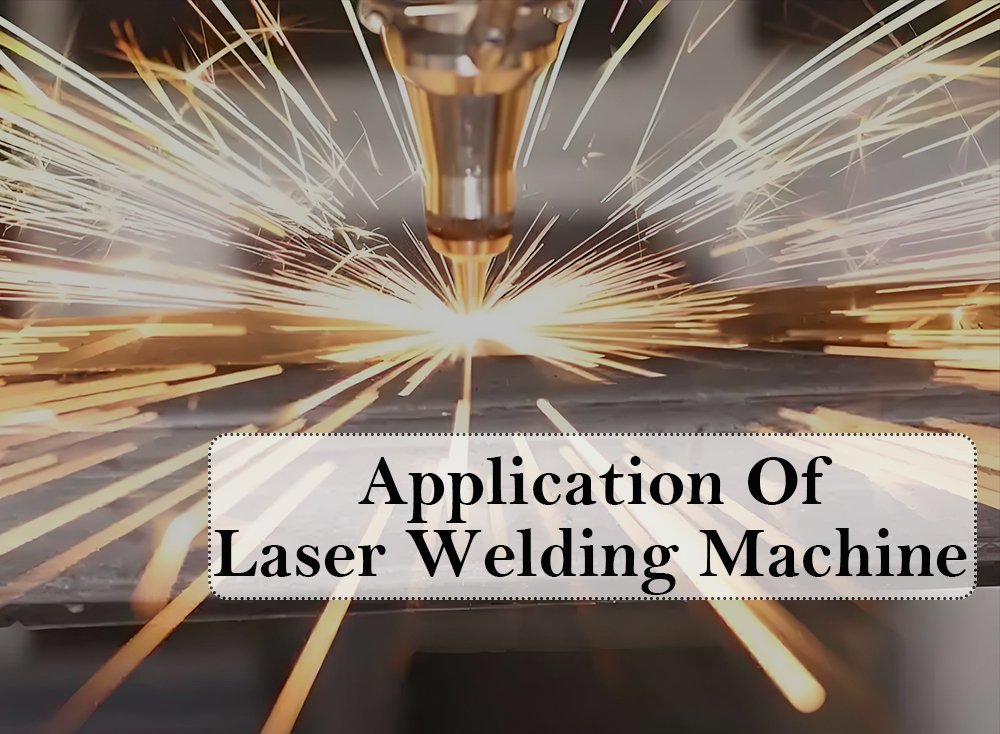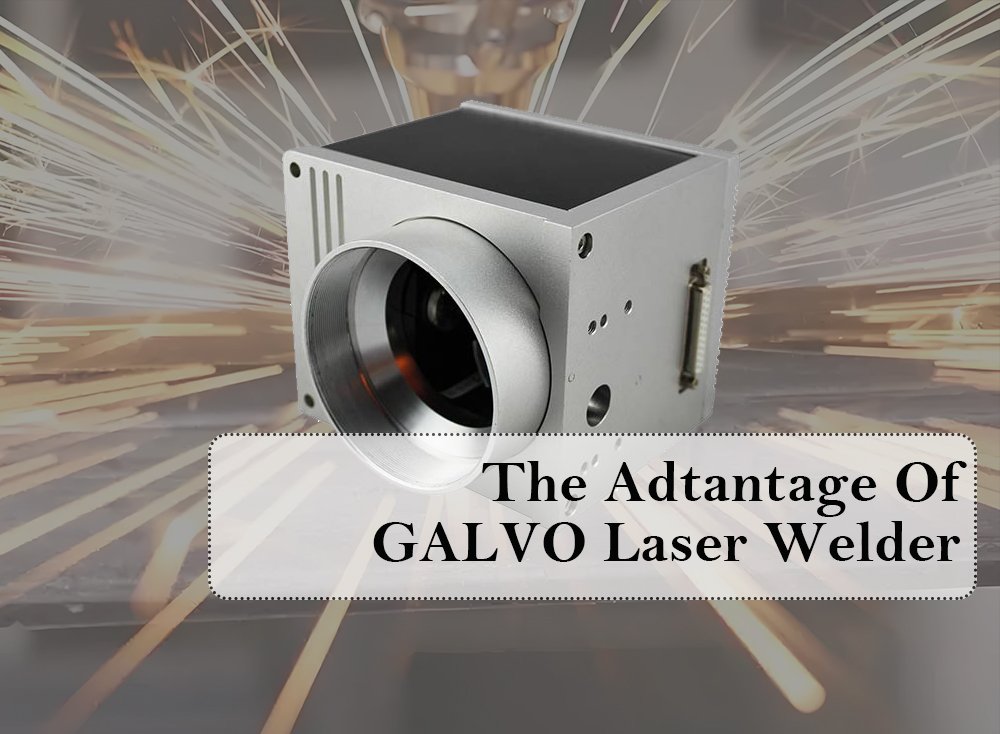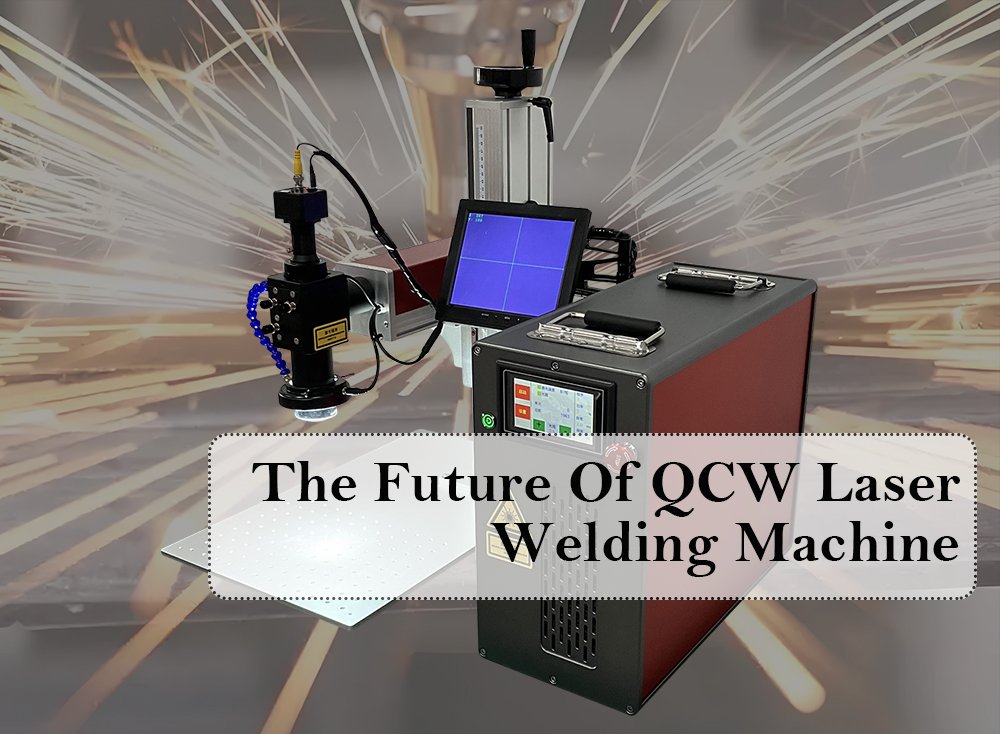Laser welder machine has emerged as a revolutionary technology in industries demanding high precision, minimal thermal distortion, and repeatable results. From delicate jewelry repairs to heavy-duty automotive manufacturing, this process exploits laser beams to create strong, clean, and efficient welds. In this blog, we’ll explore how laser welding works, what are advantages over traditional methods, and where are the laser welding applications.
1 What is Laser Welding?
Laser welding is also called Laser beam welding (LBW), it can join pieces of metal or thermoplastics through the use of a laser. The beam provides a concentrated heat source, allowing for narrow, deep welds and high welding rates.
Laser welder machine uses a high-intensity laser beam to melt and fuse materials at their contact points. Unlike conventional welding (e.g., TIG or MIG), it requires no physical contact with the workpiece, minimizing contamination and heat spread. The laser’s energy is concentrated into a tiny spot (as small as 0.1mm), enabling precise control over weld depth and width.
2 How Does Laser Welding Work?
2.1 Types of Laser Welder Machine:
- Gas laser Welding: Employs gas-based lasers(e.g., CO₂ lasers) to generate a high-power, continuous-wave beam that melts and fuses materials.
- Fiber laser Welding: Utilizes fiber-optic-delivered lasers(typically 1,070 nm wavelength) to generate a high-intensity, focused beam that melts and joins materials via keyhole or conduction mode.
- YAG Laser Welding: Utilizes solid-state lasers to fuse metal components with exceptional precision, known as the high energy density and pulsed operation.
- Laser-Hybrid Welding: Combin: Merges Arc welding and laser beam welding into a single proces. This method achieves high deposition rates with minimal distortion.
2.2 Components of Laser Welding:
Laser beam welding or laser welding euqipment mainly has four components: laser soure, optical system, welding head, control system, cooling sytem, gas supply system,etc.
- Laser source is the core component of laser welding system, responsible for generating high-energy laser beam. A laser source (fiber, QCW, or Nd:YAG ) emits a pulsed or continued light beam.
- Optical system focuses the laser beam generated by the laser onto the surface of the workpiece, ensuring efficient transmission and precise control of laser energy. Lenses or mirrors focus the beam onto the workpiece, creating temperatures high enough to melt the material.
- Welding head is the executing component of the laser welding system, responsible for accurately delivering the laser beam to the welding area and achieving welding operations. Welding joints typically have multi axis motion capabilities, allowing for flexible adjustment of welding angles and positions, making them suitable for welding complex shaped workpieces.
- Control system manages and controlls various parts of the laser welding system to ensure the accuracy and stability of the welding process.
- Cooling system cools the laser and optical system to prevent equipment damage due to overheating.
- Gas supply system provides protective gas to prevent the welding area from being contaminated by oxygen and nitrogen in the air.
3 Key Advantages of Laser Welding
- Precision: Enables micro-scale welds (e.g., circuit boards, surgical instruments) with negligible thermal distortion.
- Speed: Outperforms conventional techniques, significantly enhancing throughput in high-volume manufacturing.
- Material Versatility: Compatible with diverse metals (stainless steel, titanium), plastics, and hybrid combinations (e.g., steel to copper).
- Filler-Free Option: Achieves pure, uncontaminated bonds in many applications, eliminating the need for additional materials.
- Automation Compatibility: Seamlessly integrates with robotic systems for consistent, repeatable results in mass production.
- Low Heat Impact: Preserves integrity of heat-sensitive parts (e.g., aerospace components, delicate alloys).
4 Applications Across Industries
- Jewelry Manufacturing:
- Repair delicate chains, resize rings, or set gemstones without damaging heat-sensitive stones (e.g., opals).
- Desktop laser welders are popular in small workshops for intricate gold and platinum work.
- Automotive & Aerospace:
- Weld engine components, battery housings, and lightweight alloys with high strength-to-weight ratios.
- Ensures airtight seals for fuel systems and sensors.
- Electronics:
- Join micro-components in circuit boards or hermetic sealing of sensors.
- Medical Devices:
- Sterile welding of surgical tools, implants, and stainless steel housings.
- Tooling & Mold Repair:
- Fix cracks or rebuild worn edges on high-value molds and dies.
5 Laser Welding vs. Traditional Welding
Factor | Laser Welding | Traditional Welding |
Heat Input | Minimal HAZ, localized heating | Broad HAZ, higher thermal stress |
Speed | Faster (up to meters per minute) | Slower, manual adjustments needed |
Precision | Sub-millimeter accuracy | Limited by electrode/arc stability |
Automation | Fully programmable with robotics | Labor-intensive |
Material Range | Metals, plastics, composites | Primarily metals |
6 Choosing the Right Laser Welding Machine
- Power:
- Low Power (60–200W): For thin metals (≤1mm) and jewelry.
- Middle Power(200–500W): For thin metals (≤2mm) and jewelry.
- High Power (500–6,000W): Industrial-grade for thick materials.
- Laser Type:
- Fiber Lasers: Energy-efficient, ideal for metals.
- QCW Lasers: Replacement of YAG laser,both for metal and plastics
- Nd:YAG Lasers: Versatile for both metals and plastics.
- CO₂ Lasers: Better for non-metals (e.g., acrylics).
- Features: Mainly includes pulse control, cooling systems, and software compatibility.
7 Limitations and Considerations
- Cost: Higher initial investment than conventional welders.
- Training: Requires expertise to optimize parameters (power, pulse duration, speed).
- Material Thickness: Limited penetration depth compared to arc welding for very thick metals.
8 Future Trends
- Hybrid Welding: Combining lasers with arc welding for deeper, faster joints.
- Portable Systems: Compact, handheld laser welders for fieldwork.
- AI Integration: Smart systems that auto-adjust parameters based on material feedback.
Laser welding is reshaping modern manufacturing with its unmatched precision, speed, and versatility. While it demands upfront investment and expertise, its ability to produce high-quality, repeatable welds makes it indispensable in industries where perfection is non-negotiable. Whether you’re crafting intricate jewelry or assembling aerospace components, laser welding offers a future-proof solution to meet evolving challenges.
Ready to explore laser welding? Start by evaluating your material needs, production scale, and budget—then harness the power of light to weld smarter, not harder.




